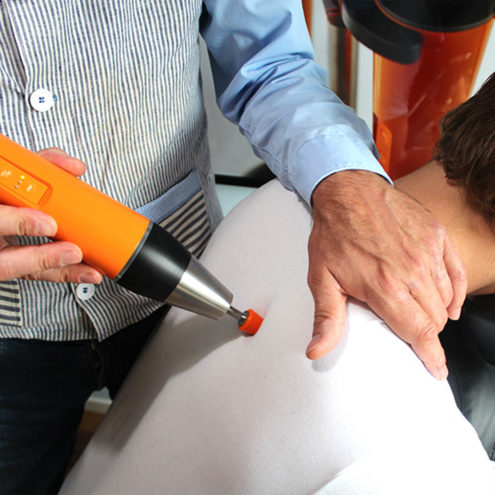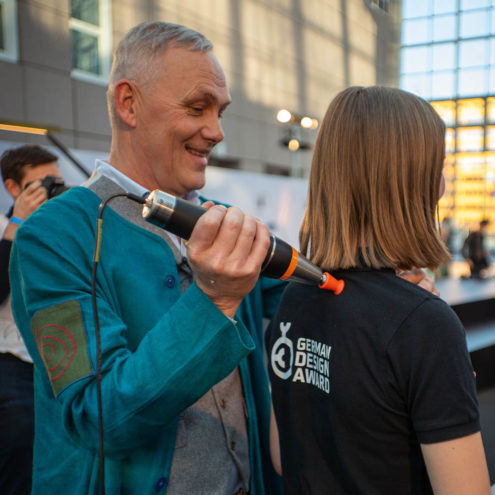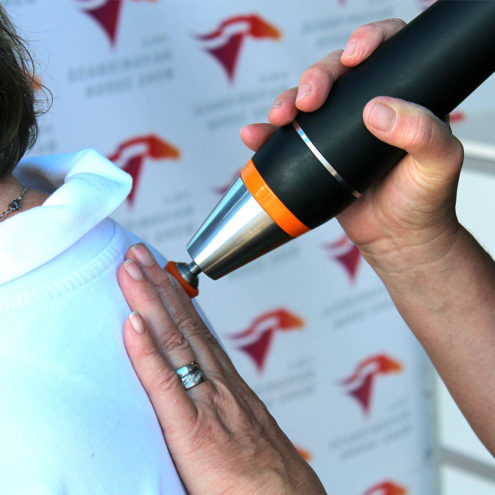Chest exercises – Build strength and shape in your chest muscles

Exercising the pectoral muscles is a key part of a balanced and functional upper body. Strong pectoral muscles not only contribute to a well-developed aesthetic appearance but also to better posture, increased upper body strength and improved performance in other physical activities. Whether you are training for strength, muscle mass or to complement your athletic performance, chest exercises are an important part of your training routine.
In this article, we go through the benefits of chest training, basic and advanced chest exercises, common mistakes, and how to optimize your training with proper stretching and injury prevention. In addition, we tell you how Fascia Clinics can help you get the most out of your chest training through fascia treatment and muscle optimization.
The benefits of breast training
Chest training is more than just building a shapely chest. Here are some of the main benefits:
1. Increased upper body strength
The chest muscles, especially the pectoralis major and minor, play a key role in movements that involve pressing and pushing, such as push-ups, bench presses and throwing exercises. Strengthening these muscles will make you stronger in daily movements and other forms of exercise involving the shoulders and arms.
2. improved posture
Many people who have weak or stiff chest muscles tend to develop a forward leaning posture. By exercising the chest in combination with back and shoulder exercises, you can achieve better posture and reduce the risk of shoulder and neck pain.
3. symmetry and muscle balance
A well-developed chest gives the body a more symmetrical and proportionate look. In addition, strong pectoral muscles balance other muscle groups such as the back and shoulders, reducing the risk of injury.
4. Support for other forms of exercise and sports
Many sports require strong pectoral muscles, especially sports such as swimming, climbing, martial arts and weightlifting. A well-trained chest improves explosiveness and endurance in pressing movements.
Basic chest exercises for all levels
Here are three of the most effective chest exercises suitable for all levels:
1. bench press
Muscle groups: Pectoralis major, triceps and anterior deltoid
Implementation: Lying on a bench, fold and lower your shoulder blades, grasp the bar slightly wider than shoulder-width and lower it to your chest. Your head, shoulders and seat should touch the bench. Inhale as you lower the bar to your chest. Your arms should be about 45 degrees from your body. Push the bar up and exhale until your arms are straight.
2. Push-ups
Muscle groups: Pectoralis major, triceps and core
Implementation: Hold a plank position with your hands slightly more than shoulder-width apart. Lower your body down in a controlled manner and push back up.
3. Dumbbell flyes
Muscle groups: Pectoralis major and minor
Implementation: Lie on a bench, holding a dumbbell in each hand with straight arms. With your arms almost completely straight, slowly lower them out to the side as far as you can and bring them back together above your chest.
Building volume
To build volume, you should train with heavy weights and 8 -12 repetitions per set. Bench press, dumbbell press and dips are good exercises for developing volume.
Increase endurance
If you want to improve muscular endurance, you should train with lighter weights and more repetitions (12-20 reps). Push-ups and cable flyes are good choices.
Shaping the chest muscles
Exercising all parts of the pectoral muscles creates a good balance of strength and mobility, as well as a nice-looking chest. Incline and decline bench presses target different parts of the chest muscles. Also, different variations of cable flyes target different parts of the chest muscles.
Common mistakes in chest training
- Too heavy weights – This often leads to incorrect technique and increases the risk of injury.
2. poor control and trajectory – Swinging weights reduces efficiency and can cause injury.
3. Insufficient activation of the chest muscles – Many people use too much shoulders and triceps, which reduces chest muscle activation.
Mobility and stretching for the chest muscles
Stretching helps to maintain mobility and prevent stiffness. Here are some good stretching exercises:
Door frame stretch – Place your hands on a doorframe and lean forward to stretch your chest.
Dumbbell flyes with light weight – Use light weight and focus on stretching your chest muscles.
Injury prevention exercises for the chest muscles
To avoid injury, you should strengthen stabilizing muscles. Good exercises include:
Eccentric push-ups – Lower yourself slowly to strengthen tendons and ligaments.
Y and T lifts with rubber bands – Strengthens the stabilizing shoulder muscles and lower trapezius.
Tips for building a sustainable breast training routine
Vary the exercises to activate different parts of the chest muscles.
Balance strength and mobility by combining heavy lifting with stretching and recovery.
Plan your recovery by giving your muscles at least 48 hours rest between sessions.
How Fascia Clinics can help you with chest training and muscle health
At Fascia Clinics, we offer treatments and advice to optimize your breast training. Fascia treatment can:
Improve mobility in chest muscles and shoulders.
Reduce muscle stiffness and pain after heavy lifting.
Optimize recovery and reduce the risk of injury.
Want to take your breast training to the next level? Visit us at fasciaklinikerna.se to book a consultation!
 Search
Search
































